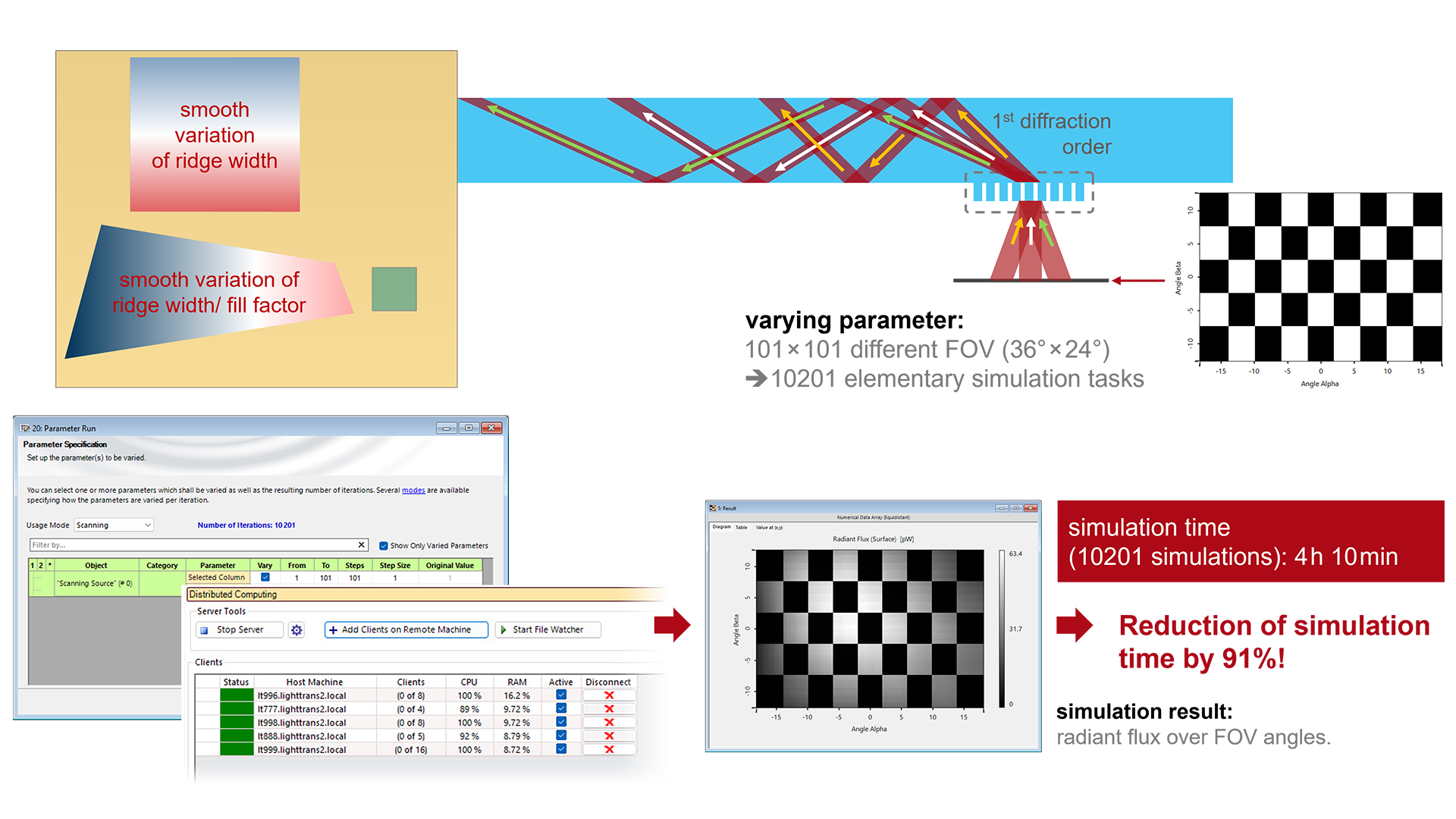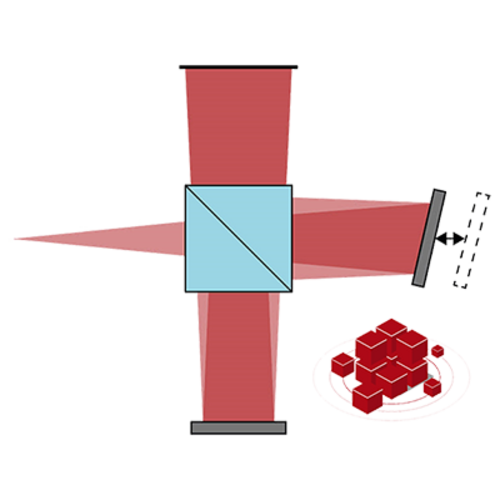Simulation of a Test Image in an AR Waveguide
Using Distributed Computing
Abstract
Modeling waveguide combiners for augmented and mixed reality (AR, MR) applications is notoriously challenging due to the complexity of the optical configurations and the multiple source modes representing the field of view (FOV), among others. Hence, detailed analyses, e.g. of the optical performance of the angular characteristics, can be quite time consuming as many source modes and field angles must be considered. In this Use Case, we use a checkerboard test image with 101 by 101 sampling points (i.e. angles) to investigate the angular performance of a waveguide, leading to 10201 individual elementary simulations.
By using a network of five multi-core PCs providing 41 clients, the simulation time is reduced to 6 hour 45 minutes (compared to ~43 hours previously).
VirtualLab Fusion Configuration
-
 VirtualLab Fusion
VirtualLab Fusion
-
 Distributed Computing
Distributed Computing




